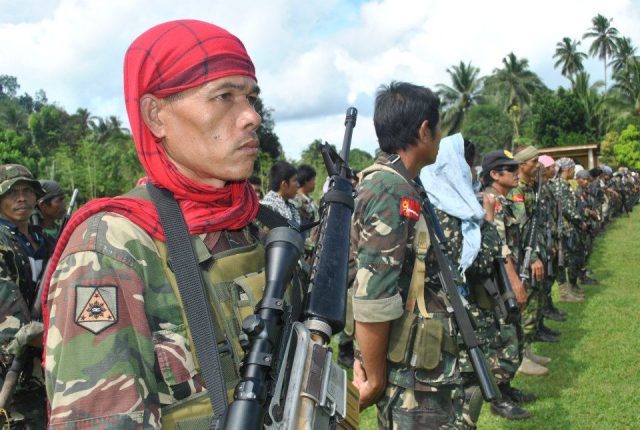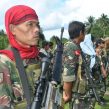
BRIEFS
Publication: Terrorism Monitor Volume: 14 Issue: 17
By:

Philippines: MNLF Hardens Stance Toward Abu Sayyaf
Four members of the Southeast Asian militant group Abu Sayyaf were killed in the southern Philippines during a confrontation with members of the Moro National Liberation Front (MNLF) on August 9. While the MNLF has worked with the military in the past on such operations, the recent clash appears not to have been coordinated with the authorities, although an army spokesman all but welcomed the news (The Philippine Star, August 10).
According to MNLF, those killed included mid-level Abu Sayyaf commander Jennor Lahab, sometimes known as Jim Dragon, and his son (Manila Times, August 11). The two were from an Abu Sayyaf faction led by Alhabsy Misaya, whose group is behind a series of kidnappings carried out in collaboration with criminal gangs, including one that ended in the brutal beheading of a Malaysian engineer (Asia Times, November 17, 2015; The Star [Malaysia], December 1, 2015). Lahab himself is suspected of involvement in the kidnapping of 10 Indonesian sailors, who were freed in May on payment of a ransom (The Philippine Star, May 1).
It is in this context that the clash seems to have occurred. The MNLF generally opposes Abu Sayyaf (which split from the group in the 1990s), and its chairman, Nur Misuari, vowed several years ago to prevent the group form using Sulu as a base for its kidnapping operations. The recent beheading of Canadian hostages John Ridsdel and Robert Hall by an Abu Sayyaf faction linked to Islamic State brought unwelcome international attention to the situation in the southern Philippines and appears to have reaffirmed the MNLF’s resolve to stamp out the kidnapping operation (The Philippine Star, April 27; The Philippine Star, June 21).
The clash is also likely a response to recent calls from President Rodrigo Duterte – the Philippine’s first president to hail from Mindanao, and himself an advocate of violent reprisals on criminals – for the MNLF (and the Moro Islamic Liberation Front) to explicitly reject Abu Sayyaf. Duterte himself has demonstrated a somewhat mixed attitude towards Abu Sayyaf in the past, but has come out strongly against IS.
At the same time, Duterte has taken steps to move forward on the stalled peace process in the southern Philippines, approving a roadmap put forward by Jesus Dureza, the presidential adviser on the peace process, which envisages massive on-the-ground development projects to boost the local economy. The MNLF will be loath to jeopardize such an opportunity, and a further bloody response to Abu Sayyaf may well be the result.
Pakistan: Rivals Lay Claim to Quetta Hospital Attack
A suicide bomber blew himself up at Quetta’s Civil Hospital in the capital of Pakistan’s Balochistan province on August 8, killing more than 70 people and injuring about 100 others. Many of those killed were lawyers who had gathered to protest the earlier killing of Bilal Anwar Kasi, the president of the Balochistan Bar Association. Also among the dead were journalists reporting on the lawyers’ protest.
Jamaat-ul-Ahrar, a breakaway faction of the Tehreek-e-Taliban Pakistan (TTP), claimed responsibility for the bombing, as well as for Kasi’s murder, but a few hours later Islamic State (IS) also stepped in to claim the bombing (First Post, August 9). Meanwhile, Balochistan’s Chief Minister Sardar Sanaullah Zehri told local reports that India’s intelligence service was behind the attack (Dawn, August 9).
Islamic State probably has the capacity to carry out such an attack through a Pakistani affiliate, and the rival claims cannot be verified. However, the more established Jamaat-ul-Ahrar – which briefly aligned itself with IS in 2014 before switching back to the TTP – has experience carrying out high-casualty attacks in Pakistan. It has masterminded several devastating blasts, including one at a crowded Easter celebration at a park in Lahore in which 72 people were killed (Express Tribune, March 27).
Some commentators have suggested the loss of so many legal experts in the Quetta attack could have serious repercussions at a local level, but why the group should specifically target lawyers is open to speculation. Professional groups have come under attack from Jamaat-ul-Ahrar in the past, notably health workers treating polio, who are sometimes portrayed by militants as part of a Western conspiracy to sterilize Muslims (Dawn, April 21, Dawn, March 18, 2015). Possibly as a professional group lawyers are an obvious symbol of constitutional authority. The lawyers certainly feel they are under fire, boycotting the courts during a period of mourning in the aftermath of the attack and demanding greater protection (Dunya News, August 16).
However, the group’s most frequent targets are the security forces and members of minority communities, a reflection of the sectarian hatreds harbored by many of the Lashkar-e-Jhangvi commanders who make up its ranks (See Terrorism Monitor, July 22). Most likely, Jamaat-ul-Ahrar was focused more on the location – the bomb went off in a hospital, the kind of soft target the group favors – than on the profession of the blast victims.





